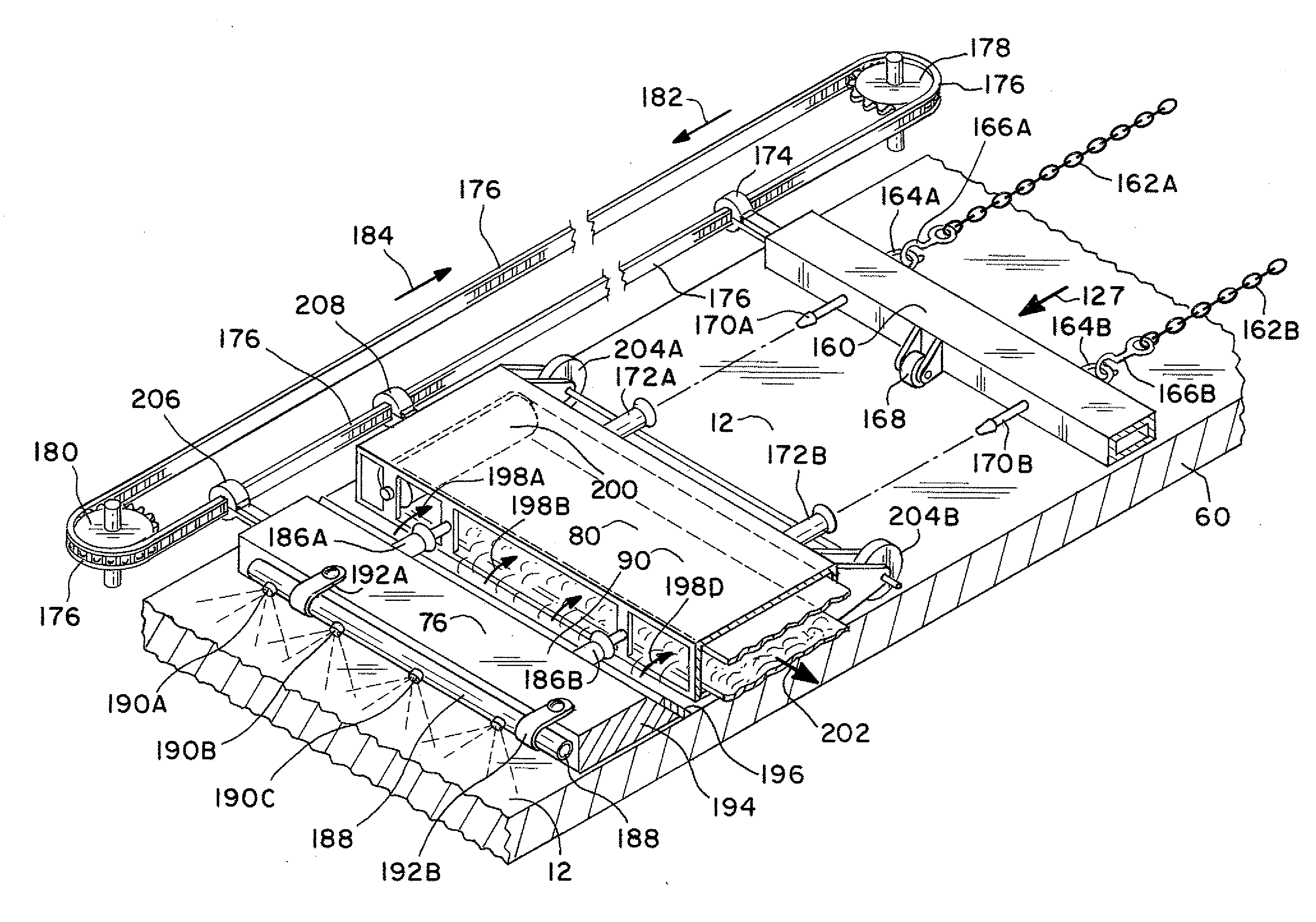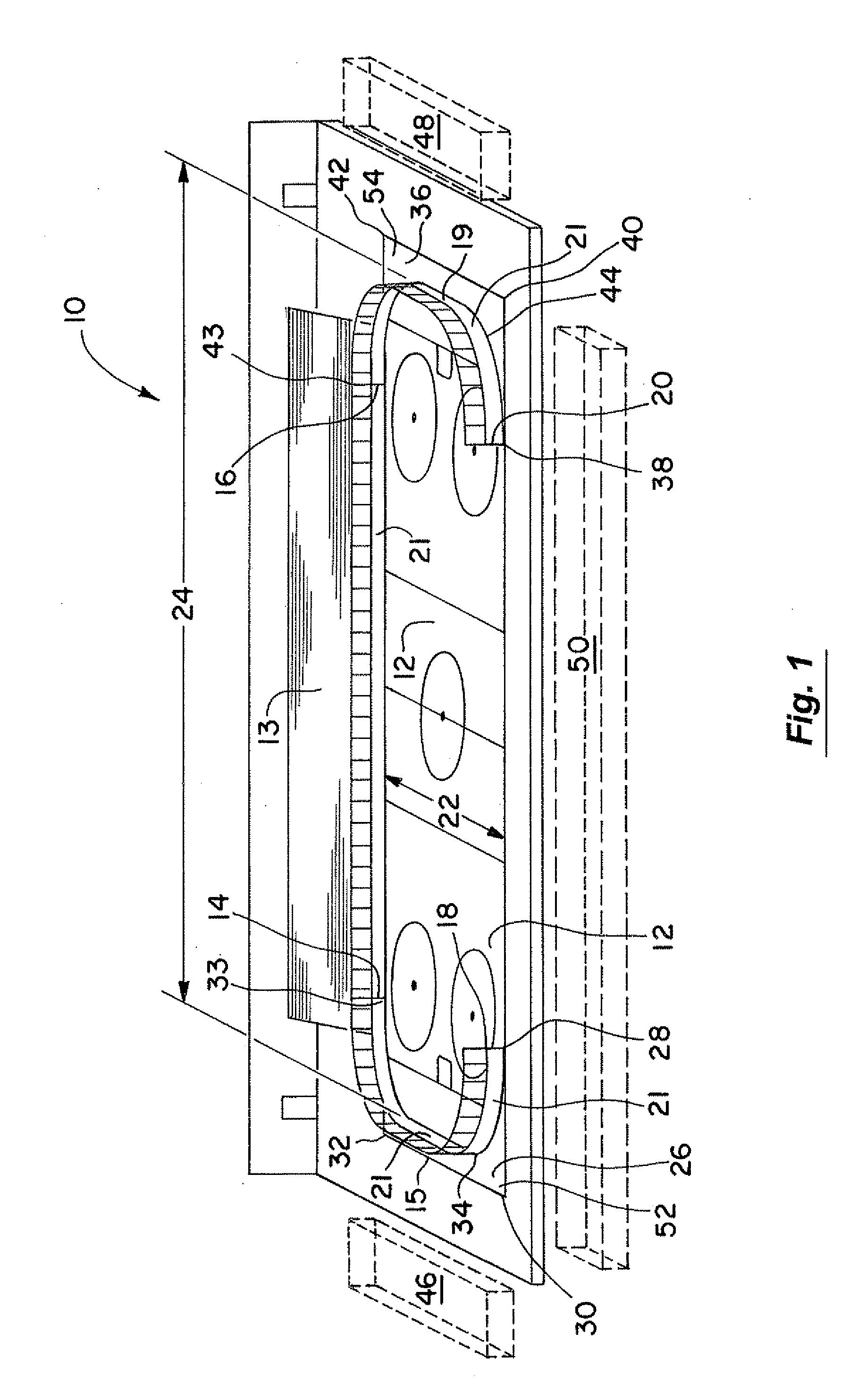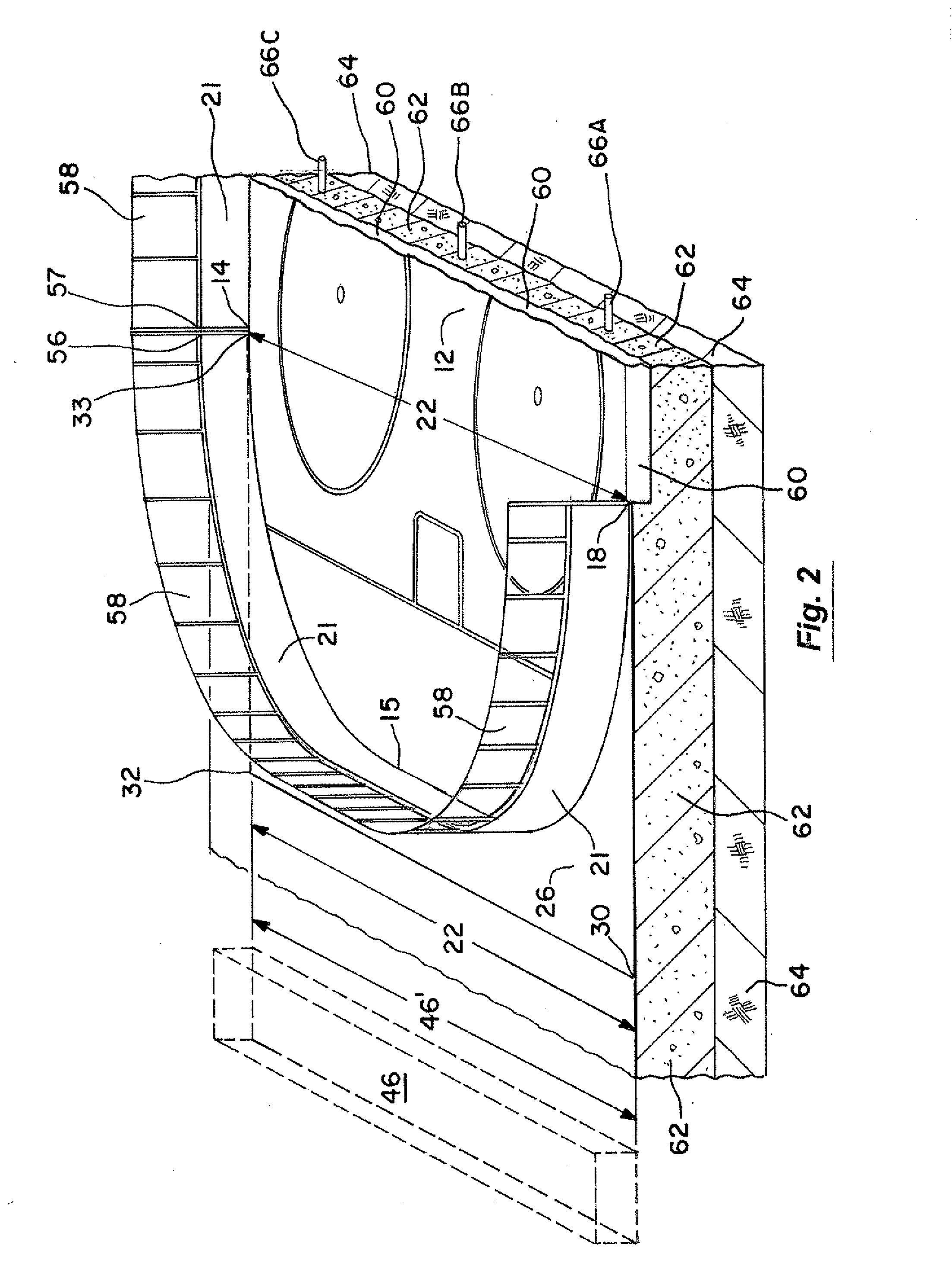Apparatus and methods for refurbishing ice surfaces
a technology of ice surface and apparatus, applied in the direction of skiing, construction, roads, etc., can solve the problems of affecting the composition, affecting the quality of ice surface, so as to achieve the effect of quick creation of new ice surfa
- Summary
- Abstract
- Description
- Claims
- Application Information
AI Technical Summary
Benefits of technology
Problems solved by technology
Method used
Image
Examples
Embodiment Construction
[0054]FIG. 1 is a perspective view of an ice sport facility 10 having an ice surface 12 and spectator seating 13. The ice surface 12 is depicted as having a configuration and markings appropriate to the game of ice hockey. For example, its center region is rectangular in configuration and each end of the rectangular center region is respectively contiguous to an arcuate end zone region. Most of the perimeter of this ice hockey playing surface is shown surrounded by a dasher board system that normally has a height of approximately 40 inches (about 1 meter). Such dasher board systems are often referred to colloquially as “the boards.” The parallel, linear portions (e.g., 14-16 and 18-20) of such ice hockey rinks are often referred to as “the side boards.” Similarly, the arcuate end zone portions of such a dasher board system are sometimes referred to as the “end zone boards.” The arcuate, left end zone dasher board portion of the boards shown in FIG. 1 is designated by item numbers 14...
PUM
 Login to View More
Login to View More Abstract
Description
Claims
Application Information
 Login to View More
Login to View More - R&D
- Intellectual Property
- Life Sciences
- Materials
- Tech Scout
- Unparalleled Data Quality
- Higher Quality Content
- 60% Fewer Hallucinations
Browse by: Latest US Patents, China's latest patents, Technical Efficacy Thesaurus, Application Domain, Technology Topic, Popular Technical Reports.
© 2025 PatSnap. All rights reserved.Legal|Privacy policy|Modern Slavery Act Transparency Statement|Sitemap|About US| Contact US: help@patsnap.com



